Color is a powerful tool in marketing. Each shade can evoke specific emotions, influence decisions, and even drive purchases. Understanding how to leverage color psychology in your marketing strategy can be the difference between capturing attention and blending into the background. Here, we’ll explore five key colors and their impact on consumer behavior, giving you insights into how to make more effective color choices for your brand.
Red is a high-energy color often associated with urgency, excitement, and passion. It’s commonly used to create a sense of urgency for limited-time offers or to stimulate excitement. Brands like Coca-Cola and Netflix use red to draw attention and convey a feeling of boldness and action.
How to Use It: Incorporate red in call-to-action buttons, promotional banners, or sale notifications. However, use it sparingly, as too much red can feel overwhelming.
Best For: Flash sales, product launches, and urgency-driven campaigns.
Blue is often linked to trust, calmness, and reliability, making it a popular choice for brands in finance, healthcare, and technology. Companies like PayPal, Ford, and IBM use blue to instill confidence in their services and convey a sense of security.
How to Use It: Blue works well in website designs, customer service pages, and any platform where building trust is essential.
Best For: Businesses in finance, insurance, healthcare, and technology, where reliability and professionalism are key.
Green symbolizes nature, health, and growth. It’s also closely associated with wealth and stability. Brands in the health and wellness space, as well as eco-friendly companies, often lean towards green to signify sustainability and vitality. Starbucks, for instance, uses green to reflect its commitment to growth and environmental responsibility.
How to Use It: Green is perfect for health-related marketing, eco-friendly campaigns, and promoting sustainability. It’s also a good choice for stores where you want customers to feel relaxed and welcome.
Best For: Organic products, health and wellness brands, and environmentally-conscious companies.
Yellow is a bright, cheerful color that exudes warmth and positivity. It’s often used to grab attention without the intensity of red. Brands like McDonald’s and Ikea use yellow to evoke feelings of happiness, friendliness, and accessibility.
How to Use It: Yellow can highlight important information, like limited offers or calls to action. However, avoid overusing it, as too much yellow can create eye strain.
Best For: Highlighting deals, adding warmth to product pages, and conveying a friendly brand image.
Black is often associated with luxury, sophistication, and authority. Many luxury brands, like Chanel and Louis Vuitton, rely on black to convey elegance and exclusivity. Black can make a brand look powerful and high-end, appealing to customers seeking premium products.
How to Use It: Use black in minimalist designs, high-quality images, and branding for high-end products. When paired with white or metallic tones, black can add a timeless, sophisticated touch.
Best For: Luxury items, high-end services, and minimalist, modern brands.
Choosing the right colors for your marketing strategy is essential to shaping how customers perceive your brand. By understanding color psychology, you can create a cohesive brand identity that resonates with your audience and drives engagement. Whether you want to evoke excitement, build trust, or promote luxury, these colors can help you communicate your message more effectively.


Recent Comments